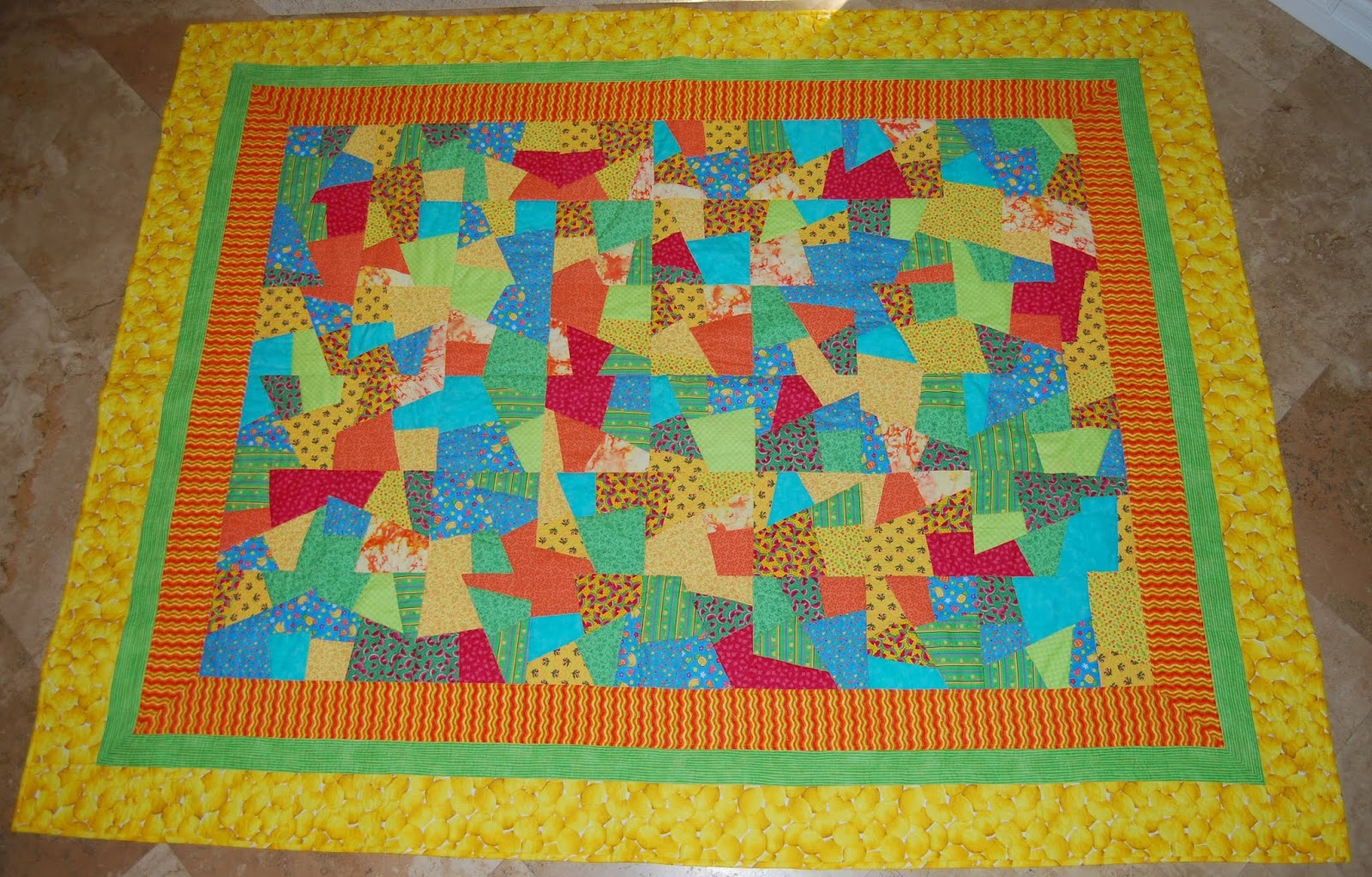Linen Closet: Evolution of a Crazy Quilt Pattern
This quilt: "Summer Citrus" contains fabric with a
summer fruit theme: lemons, cherries, watermelon...
Before moving to the west coast, I went to visit with a new friend and when we found we were fellow quilters she pulled out her quilts to share. She had one in pinks which caught my eye. There was no discernable pattern and I couldn't figure out how it came together, until she pointed out the blocks which made up the quilt.
Then she gave me a zeroxed copy of the block.
This was my introduction to the Crazy Quilt.
Armed with her instructions I went home to create my own pink quilt,... and then a purple one,... several baby quilts,... graduation gifts,... well, I just haven't stopped using this pattern. But the configuration of the blocks and my goals for the ancestors of that first quilt have definitely evolved.
On the pink and purple quilts I took great pains to evenly distribute the lights and darks across the top. As familiarity with the technique has grown, I've allowed the darks or lights from each block to "touch" each other and create odd shapes. You can see why this kind of quilt has also been called a Puzzle Quilt.
Crib sized Crazy Quilts
The Crazy Quilt was quite popular in the Victorian era, when quilters used a variety of fabrics: velvet, silks and brocades on a foundation square of calico or muslin for the blocks. The top was then embellished with embroidery, lace and even trinkets, to showcase their handcraft skills.
Some day I may get around to creating a more traditional Crazy Quilt. In the meantime, let me share the directions for this modern version:
Since there are six elements to this block, I recommend starting with at least six fabrics. Cut 11 inch squares and stack them. (If you are cutting from a folded piece of fabric as it is off the bolt, be sure that the right side is facing the same way for all the squares when you stack them. Otherwise, you will have a random mirror image of the block which cannot be paired will any other pieces.)
Cut through all the thickness along the block pattern lines. You now have each pattern piece in all the fabrics, and can "mix and match" them to recontruct your six piece block. Note that, with all the seam allowances, the edges of the finished block will not be straight. You will have to squared them off to a standard size in order to sew the blocks together. They will end up measuring about 8.5 inches. If you find you have a square that doesn't match the dimensions of the rest, you can always add a strip; these are random shapes, after all.







Comments
Post a Comment